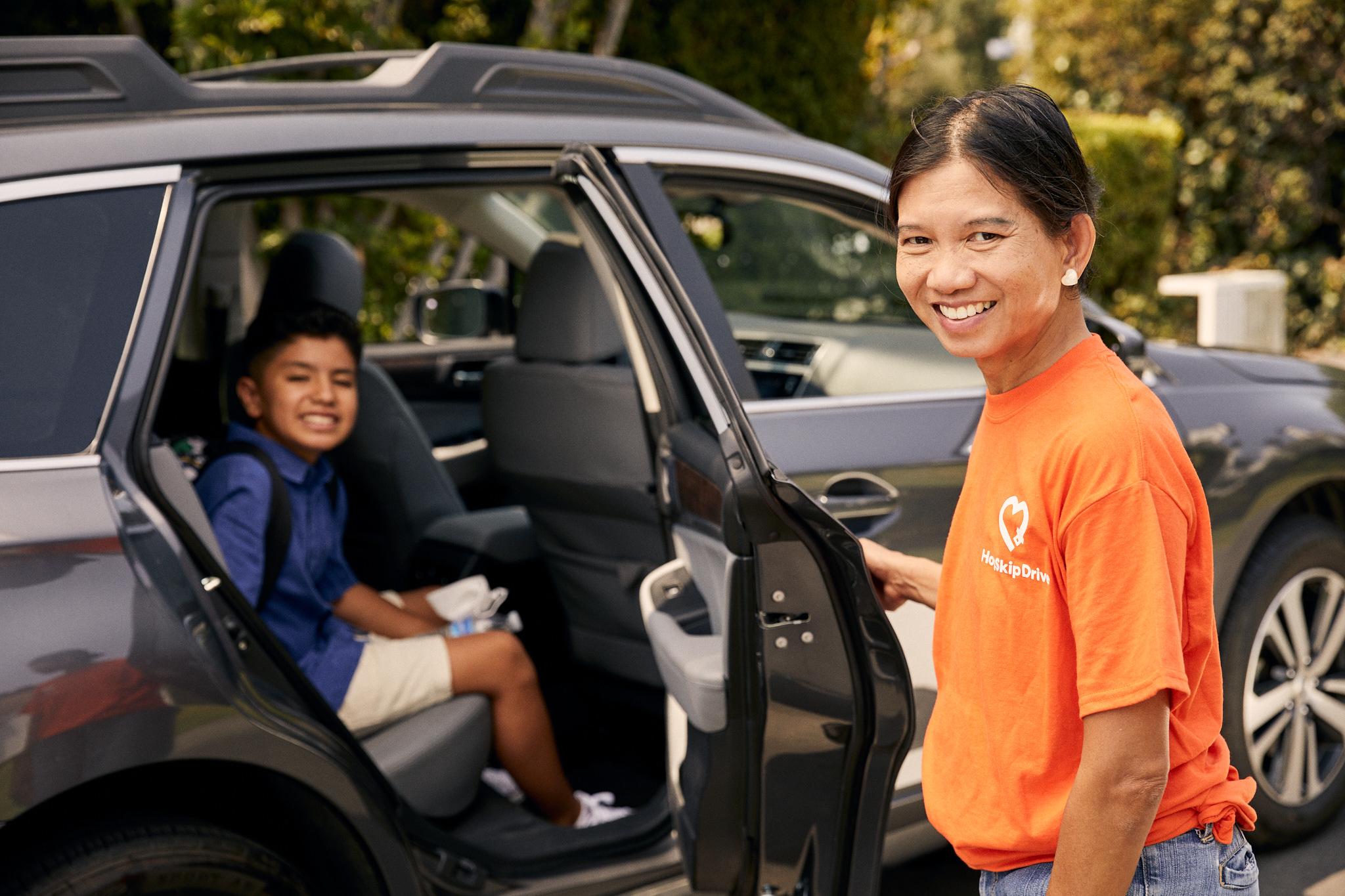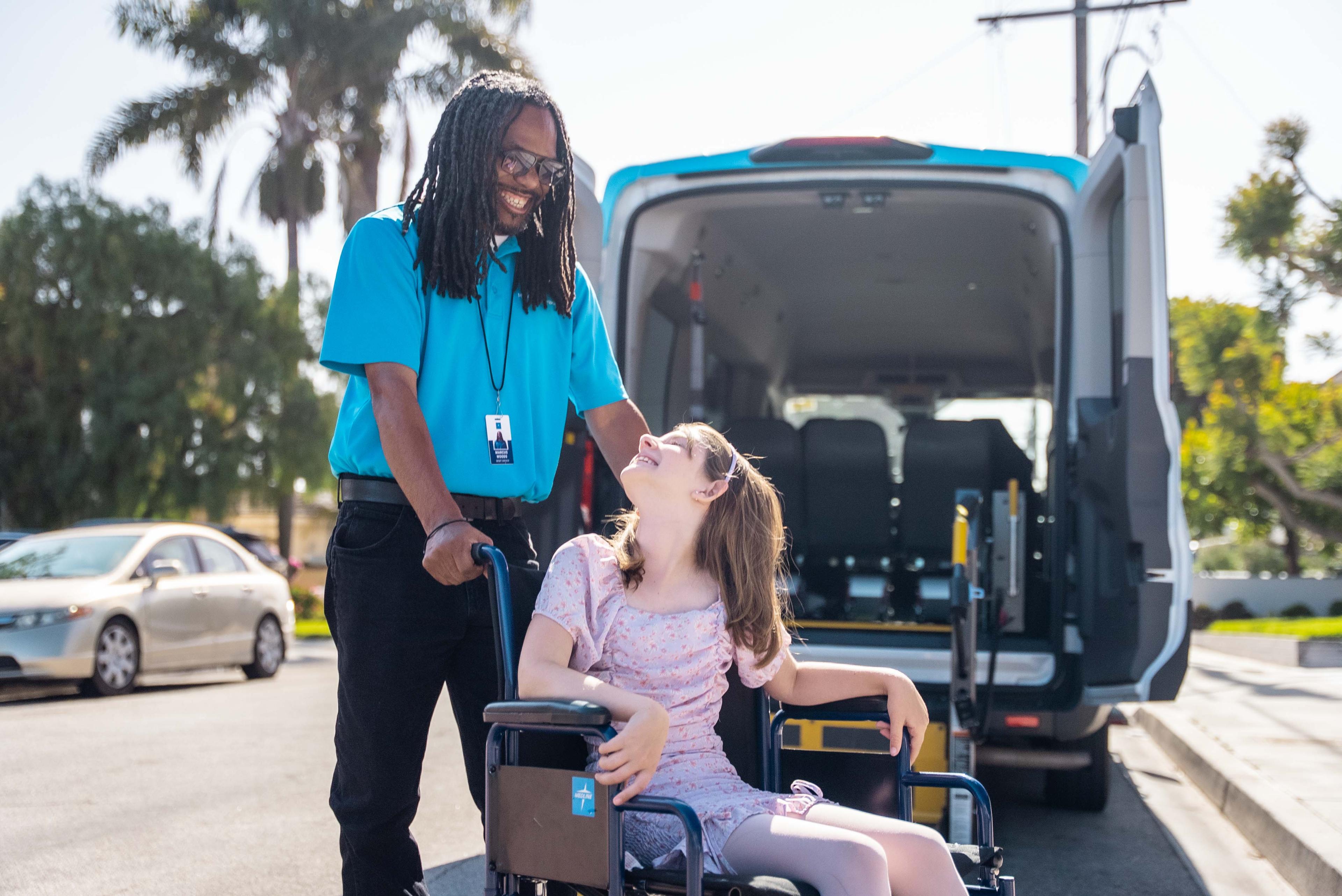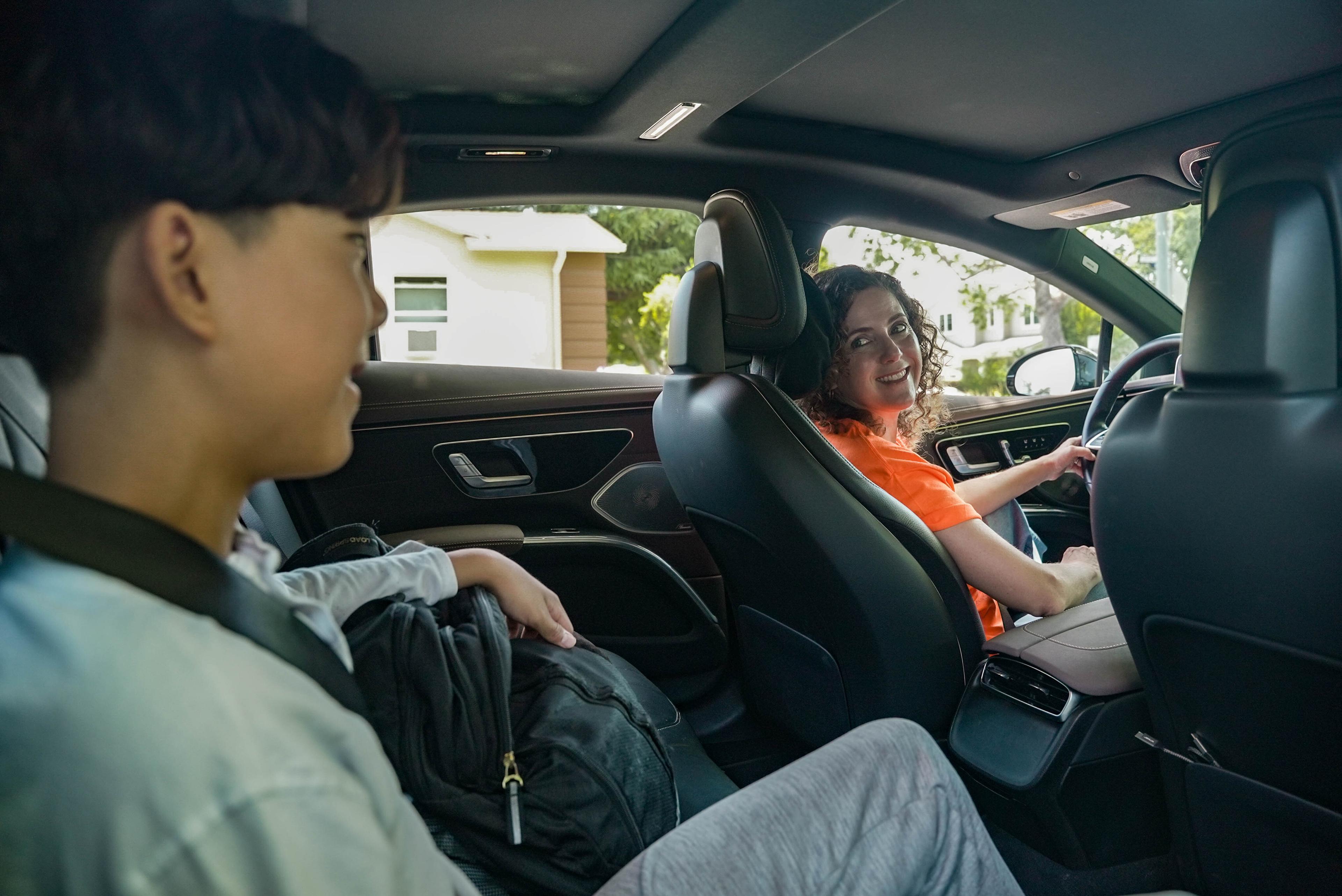HopSkipDrive works with school districts across the country to provide innovative transportation solutions that are adaptable, reliable, safe, and efficient. School districts that partner with HopSkipDrive gain much-needed flexibility when it comes to driver supply by adding a new resource — a network of highly vetted CareDrivers — to their student transportation options.
By tapping directly into a school district’s community to recruit CareDrivers for the HopSkipDrive platform, driver supply can be adjusted and managed to meet demand. CareDrivers are required to undergo a rigorous 15-step certification process, which ensures that every CareDriver has at least give years of caregiving experience and undergoes extensive initial and ongoing background checks with various agencies, including the FBI.
A Driver Supply That Helps Districts Optimize Resources While Minimizing Cost
HopSkipDrive helps school districts “right-size” their transportation operations so they can get the most out of the bus fleets and CDL bus drivers they already have. HopSkipDrive CareDrivers drive their own personal vehicles, which must pass annual inspections and be less than 15 years old.*
The benefits of this new driver supply for school districts include:
Paying for only the rides that are needed
Decreased dependence on CDL drivers
Elimination of the need for bus depots, fleet maintenance, and district-provided insurance
Utilization of cutting-edge technology to surpass existing safety standards
Parent and school district visibility into real-time ride status, reducing calls to — and the burden on — schools
*In DC, MD, PA, Minneapolis, and Seattle, vehicles must be no more than 10 years old.
Multimodal Optimization Drives Results Districts Can Count On
HopSkipDrive identifies the hardest-to-serve opportunities and utilizes technology to optimize existing resources.
Working with HopSkipDrive to optimize transportation plans and take advantage of all transportation modes can:
Reduce the need for buses and CDL drivers by 20%
Reduce travel time for the top decile students by 50%
Save up to 40% per student when there are 12 students or fewer on a bus
Alleviate challenges caused by bus driver shortages
Reduce capital required for additional buses
Dramatically shorten travel time for students
Serve more students at no extra cost
Partnering with HopSkipDrive Is a Win-Win for Everyone
School districts that partner with HopSkipDrive can better serve the transportation needs of more students while optimizing resources and minimizing cost.
“HopSkipDrive is not only 60% less expensive than our previous car service solution, but it is also far more reliable. We had worked with HopSkipDrive for only a few weeks before we quadrupled the number of students riding with their CareDrivers, and we’ll continue to expand district ridership with them.”
—HopSkipDrive education partner
Parents have real-time visibility into where their child is at, easing worries and relieving stress.
“The software is set up to easily provide specific instructions for CareDrivers, and they managed to track my eight-year-old down with ease. My daughter loves the independence of riding on her own and beams with her own sense of accomplishment every single day she rides with HopSkipDrive.”
—HopSkipDrive parent
Students get to and from school and extracurricular activities safely and on time.
“All of the CareDrivers are super friendly, and it’s always been a really positive experience. I was able to gain more stability, make more friends, be the old me and be happy, smiling and excited to go to school. HopSkipDrive definitely made a positive impact in my life.”
—HopSkipDrive student
CareDrivers set their own schedule and earn good money while helping children and families in their community.
“I’ve been a HopSkipDrive CareDriver for a bit over a year now. I can’t express the gratification I receive from both children and parents. I’m so happy to be able to assist these families in need. I’m also able to make my own schedule so I know in advance weeks prior to scheduling with my other job.”
—HopSkipDrive CareDriver
Interested in learning more about how HopSkipDrive partners with schools, districts, counties, and government agencies to solve complex transportation challenges where there is a heightened need for safety, equity, and care?



